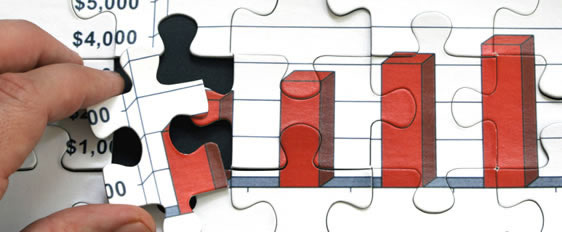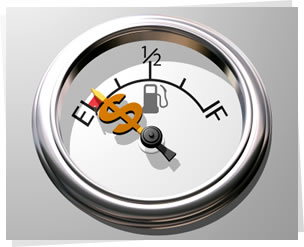Making Sense of Your Financial Dashboard

When you’re driving, it’s crucial to periodically check your dashboard to note your speed and how much gas you have left.
The same is true of your business’ financial dashboard.
But what if the values on your car’s dashboard were written in ancient hieroglyphs instead of numbers?
It would be almost the same as having no dashboard at all, right? You could easily run out of gas or be pulled over for driving well above (or below) the speed limit.
The financial dashboard of your business is no different. You could check it as often as you like, but if you don’t know what you’re looking at, it’s useless.
Reading the Gauges of Your Business
 At the center of your financial dashboard is your profit and loss statement. You ought to look at that at least once a month to navigate your business.
At the center of your financial dashboard is your profit and loss statement. You ought to look at that at least once a month to navigate your business.
When you check your profit and loss statement, ask yourself the following questions.
Are revenues more or less than your expenses?
If your bottom line is positive, you’re profitable. If the bottom line is negative, you’re losing money.
Instinct tells you that if your bottom line is negative, you have to take action to cut your expenses or beef up your revenues. Otherwise you risk losing your business.
Sometimes, your business could be losing money for part of the year, only to make up for it later in the year. That’s ok. You can still run a very successful business like that. But in your down months, you have to manage your cash very carefully.
Are revenues growing or shrinking last month versus this month? Last year versus this year?
There are many reasons this may be happening. What’s important is you find out what’s caused the change. It’s never just the economy.
What quarters are revenues strongest in your business? When are they weakest?
Beauticians will tell you Mondays are dead at the shop. Meanwhile, car repair mechanics will tell you Saturdays are crazy-busy.
Know the “crunch periods” in your business. Plan for them.
Do you close more business at certain times during the year?
Many businesses are very slow in January, when most people are busy paying off holiday bills. Summers are often slow too, because decision makers are on vacation.
What quarters are slow or busy for your business?
Are expenses growing or shrinking last month versus this month? Last year versus this year?
Some expenses we have little control over, like tax rates. But you may be spending money on services that are not giving an adequate return on your investment.
When you look at your profit and loss statement, that’s the time to scrutinize your expenses. What expenses can you reduce or cut altogether?
Making Smarter Decisions to Drive Your Business
 Once you have the answers to these questions, knowing what to do for your business becomes much clearer. You’re no longer driving blind.
Once you have the answers to these questions, knowing what to do for your business becomes much clearer. You’re no longer driving blind.
Are there clients you’re servicing that cost you money? Maybe it’s time to drop those clients.
Do you have clients that have more potential to do more business with you? Why not invest time in building those relationships?
You’ll do a much better job of successfully driving your business when you understand your financial dashboard.
Don’t shy away from your profit and loss statement — make it your best friend.
In our wrap-up piece, we’ll share how hundreds of small business owners around the country are rapidly learning how to understand their financial dashboards, and reaping the rewards.

